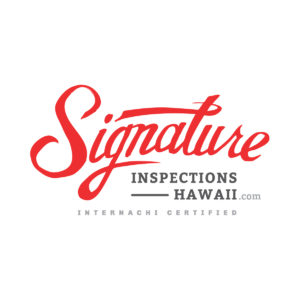Crawlspaces are notorious for the nasty discoveries made there by inspectors, and it isn’t hard to figure out why; for one thing, their cool, dark environment attracts undesirable pests and can promote dangerous conditions. And since crawlspaces are mostly unmonitored, hazards can breed there unchecked for long periods of time. The following are some of the more common dangers discovered in crawlspaces:
- mold and fungus. Just like pests, mold and fungus can grow rapidly in crawlspaces. They are both a health concern as well as a cause of wood decay, which can require a costly repair. Airborne mold spores can potentially enter the living space from the crawlspace. Molds produce allergens (substances that can cause allergic reactions), irritants and, in some cases, potentially toxic substances called mycotoxins. Inhaling or touching mold or mold spores may cause allergic reactions in sensitive individuals. Allergic responses include hay fever-type symptoms, such as sneezing, runny nose, red eyes, and skin rash (dermatitis). Homes infected with molds and fungus are also much more difficult to sell, often requiring costly remediation prior to closing the deal.
- pests. Dirt crawlspaces provide the environment that is enjoyed by ants, termites, and various other pests. Termites cannot survive long outside of their mud tubes, which you may see on foundation walls and piers. Carpenter ants should be plainly obvious as well, and both of theses pests can cause structural damage. Also bear in mind that where there are pests, there may also be pesticides, perhaps improperly applied, which is one reason why you should not enter crawlspaces without personal protective equipment. Snakes, spiders, bees and scorpions may also be lingering in the crawlspace, and while they pose little structural danger to the house, they certainly can harm you! Rapid retreat there can be difficult, so be cognizant of escape paths.
- hantavirus. Crawlspaces are perhaps the most likely sites in houses where hantavirus may be found. This is partly due to the fact that rodents that carry the pathogen are attracted to areas that are undisturbed by humans. Also, crawlspaces are generally dark places that lack ultraviolet (UV) radiation, which can rapidly inactivate the virus. Exposure to hantavirus may lead to Hantavirus Cardiopulmonary Syndrome (HCS), characterized by headaches, fever, difficulty breathing and, often, death. There is no known cure, vaccine or treatment that specifically targets HCS. However, if the symptoms are recognized early, patients may benefit from oxygen therapy.
- asbestos insulation. Do not disturb asbestos! The microscopic fibers that cause illness become airborne when the insulation is handled or disturbed, and if it appears to be in good shape, it might not be a problem at all. Prolonged exposure to asbestos insulation can cause mesothelioma, which is a cancer of the lining of the chest and the abdominal cavity, as well as asbestosis, in which the lungs become scarred with fibrous tissue.
- standing water or sewage. Dirt crawlspaces are susceptible to water seepage, which can create a host of problems, such as microbial growth, odors, damage to stored belongings, and risk of electrical shock.
- structural collapse. If the home itself is unstable, it might be dangerous to enter its crawlspace. It is easy to become pinned, trapped or even crushed by unstable crawlspaces. Make sure someone knows that you are inspecting the crawlspace before you enter it.
- improper wiring. Watch for loose wiring, open junction boxes, or wiring that has become loose and fallen to the floor.
- source of energy waste. Traditionally, crawlspaces have been vented to prevent problems with moisture, and most building codes require vents to aid in removing moisture from the crawlspace. However, many building professionals now recognize that ventilated crawlspaces allow a great deal of heat loss in the winter and moisture intrusion in the summer from moist air.
Signature Inspections Hawaii, LLC, is FULLY Insured & “NATIONALLY CERTIFIED” by InterNACHI. InterNACHI also requires inspectors to continue their education through accredited courses, conferences, online learning, etc… and annual Inspector Certificate Testing in order to hold a current certificate.
Contact Us Today || Book You Inspection Now
808.388.3425
Trevor Drinen | CPI Certified Professional Inspector # NACHI16122702
*For a more detailed explanation of the inspection process please feel free to visit: InterNACHI Residential Standards Of Practice and InterNACHI Code Of Ethics .









